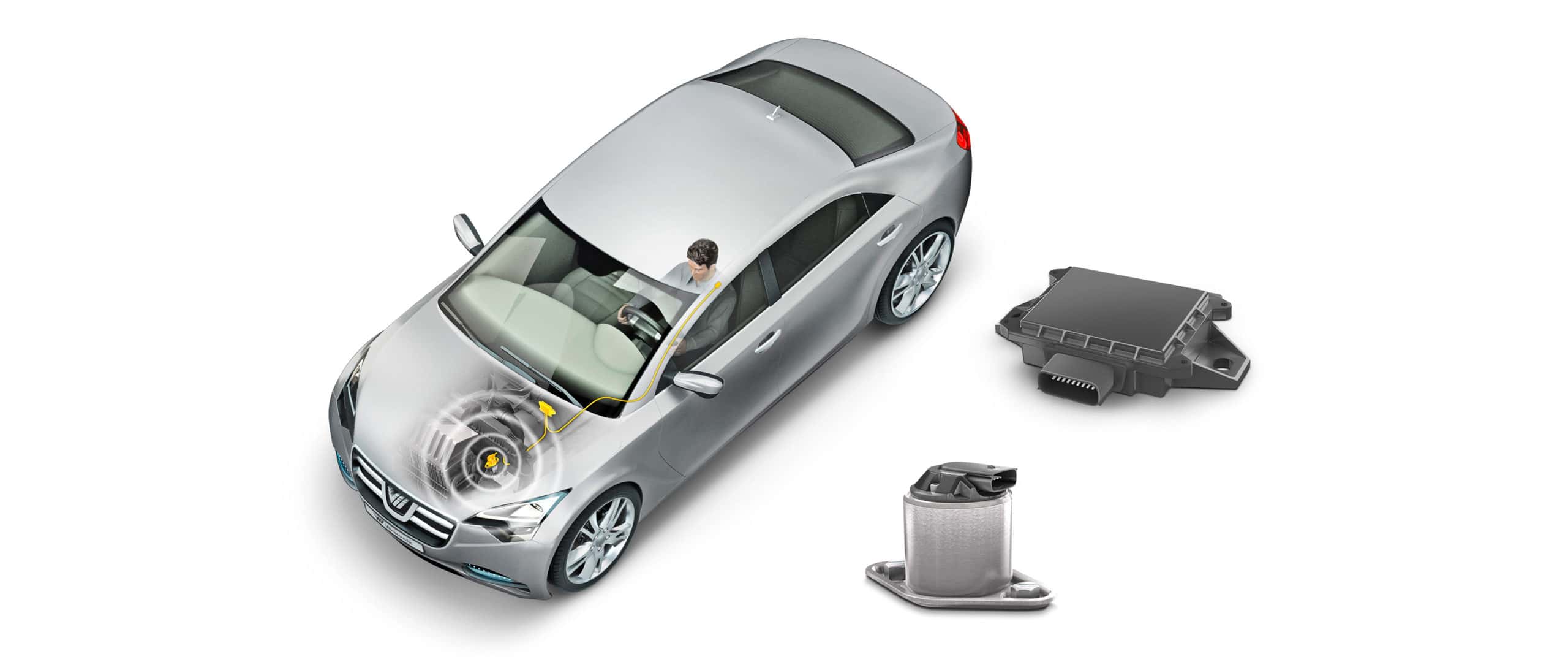Darmstadt, 02. July 2014 |
Active vibration control for electric vehicles with range extender
At the “8th symposium for engine acoustics” in Magdeburg, Germany, TrelleborgVibracoustic presents an active vibration control for electric vehicles with range extender. The system enhances driving comfort by eliminating vibrations of the 3- or 4-cylinder combustion engine used to extend the driving range.
Electric vehicles with range extending internal combustion engines represent a particular noise and vibration (NVH) challenge. The quiet and smooth operation in electric mode is contrasted by the rather loud and harsh running range extender that might affect interior comfort and therefore undermines one of the electric vehicle´s unique selling propositions.
This situation is often exacerbated by the need for weight reduction throughout the vehicle to maximize the electric driving range. The omission of passive noise reduction measures like insulation material and engine balance shafts reduces weight but further increases perceived noise and vibration. An internal combustion engine generates a large variety of excitations, manifesting themselves as vibrations and noise, transmitted either structure borne or air borne. The structure borne vibrations propogate through the engine mounts, the car body etc. all the way to the interior of the vehicle and become apparent either in the form of a vibration at the steering wheel, seat tracks or floor pan, or indeed translate into disturbing sounds within the cabin. These unwanted characteristics often change in frequency as the engine speed changes, making a conventional (passive) approach unable to follow and remove them before they become prevalent in the cabin.
The TrelleborgVibracoustic Active Vibration Control (AVC) system identifies and cancels specific dominant structure borne vibrations and resultant sounds to improve the NVH standard of a vehicle. The basic principle is to fight incoming sinusoidal vibrations with specifically generated counter-vibrations of equal frequency and amplitude but opposite phase. The active approach here, within the AVC system, involves controlling an electrodynamic actuator (active damper) which provides into the rail or vehicle body, the conduit for vibration, this counter–vibration or rather counter-force, shifted in phase. This out-of-phase force and its frequency are resolved by a series of complex algorithms within the Electronic Control Unit, and are either based upon a lookup table in the case of an open loop system, or via a feedback sensor (either microphone and or accelerometer) in the case of a closed loop system.
With the development of an active vibration control (AVC), TrelleborgVibracoustic demonstrates that a single actuator AVC system with open loop control is sometimes already sufficient to meet the customers NVH requirements. It is able to reduce interior noise over a wide range of frequencies to levels otherwise only achievable through balance shaft units or the like.
With the increasing number of hybrids, the use of downsized 3- and 4-cylinder engines and ever more lightweighting efforts throughout the automotive industry, active solutions are bound to become a part of the standard NVH solution toolbox.
TrelleborgVibracoustic is the leading provider of anti-vibration solutions for the global automotive and commercial vehicle industries. Founded as a joint venture by Freudenberg and Trelleborg in 2012, the company generated sales of approximately 1.7 billion Euro in 2013. TrelleborgVibracoustic has around 10,000 employees at 38 locations in 18 countries who develop and produce powertrain and chassis components for anti-vibration control.

